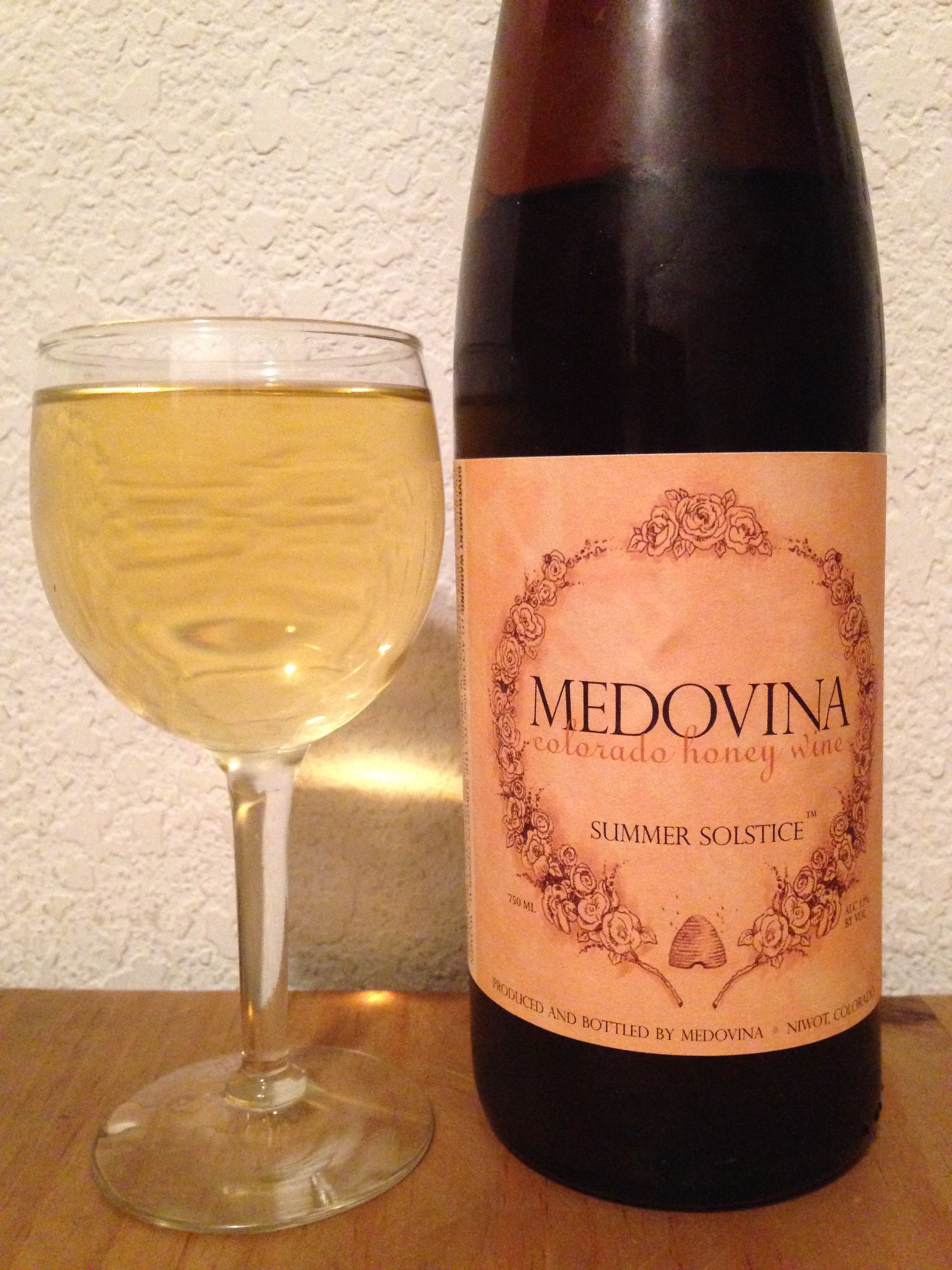Mead Review: Medovina Summer Solstice

Summer Solstice is that rarest of animals in the commercial mead world: a relatively dry mead from a small producer who tends his own beehives. Medovina is the creation of Mark Beran of Niwot, Colorado, who has been keeping bees since the 90’s and who–as I’ve been reminded of a few times when chatting with and buying mead from him at the Boulder Farmers Market–is incredibly knowledgeable about the process of mead-making and the particular characteristics of different forms of yeast. But I’ll let him tell you his story.
Free of the excessive sweetness and viscosity that obscures the unique nature of many meads, Summer Solstice one allows the varied floral aspects of the wildflower honey it uses to shine through and for the palate to clear a bit between sips. At 12% abv, it’s middle of the road in terms of mead alcohol strength…noticeable, but not hot or overpowering. It’s also very reasonably priced at $20, considering the short supply of honey these days.
Don’t get me wrong: I like a sweet, high-alcohol mead on a winter’s evening or after a heavy meal–it’s better than most desserts and is certainly more bracing. But there’s a lot more to mead than sugar, alcohol, and the mental image of vikings slugging down gulps of the stuff after raiding villages…ok, maybe the latter is just my particular hangup.
Summer Solstice is heady and warming, with a complicated flavor that reflects the particular mix of wildflowers present in 2010, the year of the bottle I acquired. I find it hard to describe and to figure out, but like most dry meads, it strikes me as a trove of precious information–an essence of a place at a particular time that I need to pay homage to before it slips away forever.
Miscellaneous:
As bees are opportunistic and have a range of up to multiple miles from the hive, and as the particular composition of a honey is always unique. Hence, the unique and highly regional nature of a given honey crop, and the variation from year to year of mead.
The closest you’ll get to an exception along these lines is the so-called ‘single-source’ honeys–orange blossom, sage, sunflower, etc–in which hives are located within a large area planted with the cultivated crop in question (e.g., in a Florida or California Orange grove) and the aroma and flavor imparted by that plant predominates in the honey. Of these, I’ve had good mead-making results of late with Northern Brewer’s Orange Blossom honey.
Speaking of unique beverages, I was fortunate a few years ago to sample an outstanding cider made by Medovina in collaboration with Dick Dunn of Talisman farms. Dick grows cider apples, makes incredible ciders, maintains cider and mead email digests, is the President of the newly-formed Rocky Mountain Cider Association, and is a gracious and generous supplier of cider information and advice to many, myself included. Dick and Mark are true sages of their craft, and I salute them for their efforts.
Issue:
If you’re into mead, you may already be aware of the signature issue facing honeybees today: Bee die-off. Honeybees have been dying in large numbers in the last decade, threatening not only honey production but, more importantly, pollination of fruiting food plants. How much do we rely on the pollination of fruiting plants? Estimates are that one in three bites of food exist because of pollinators. No pollination, no fruit (No apples! No cider!), and no nuts. Whole Foods recently illustrated what their produce section would look like without bee-pollinated plants, and the results are pretty stark. Debate continues about the causes of bee die-off, but major factors are the presence of neonicotenoid pesticides–which Europe has banned but North America has not–and bee habitat loss.
This issue threatens not only the worlds of cider and mead, but food production and environmental health in general. To learn more about the subject: what it is, why it matters, and what you can do about it, visit the Bee Die-Off page.
–
Thanks for visiting The Cidersage Blog. If you found this content to be useful, consider subscribing via the Subscribe link in the side bar, and be sure to visit our resources and tutorials pages for more in-depth hard cider and mead information.
Leave a comment